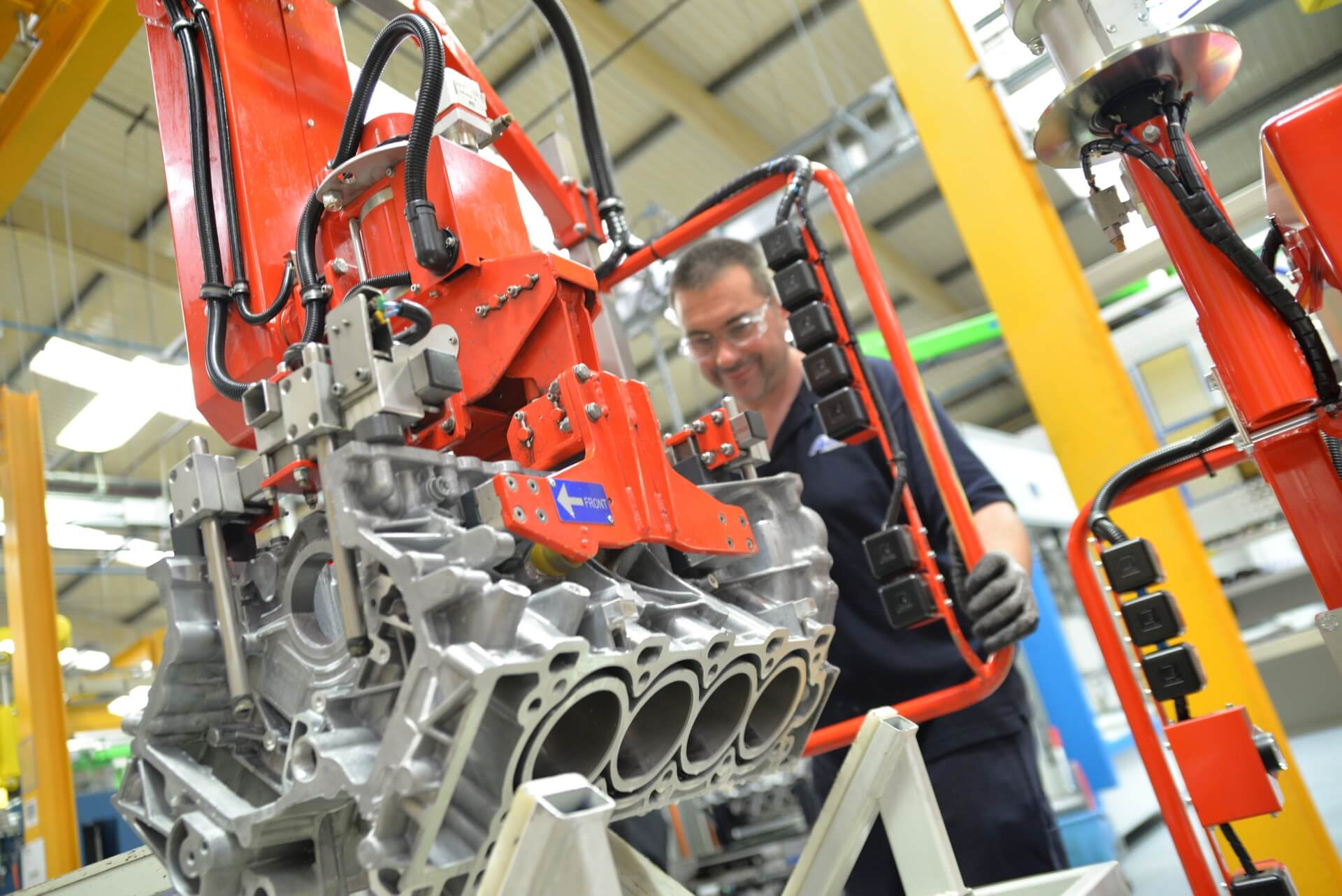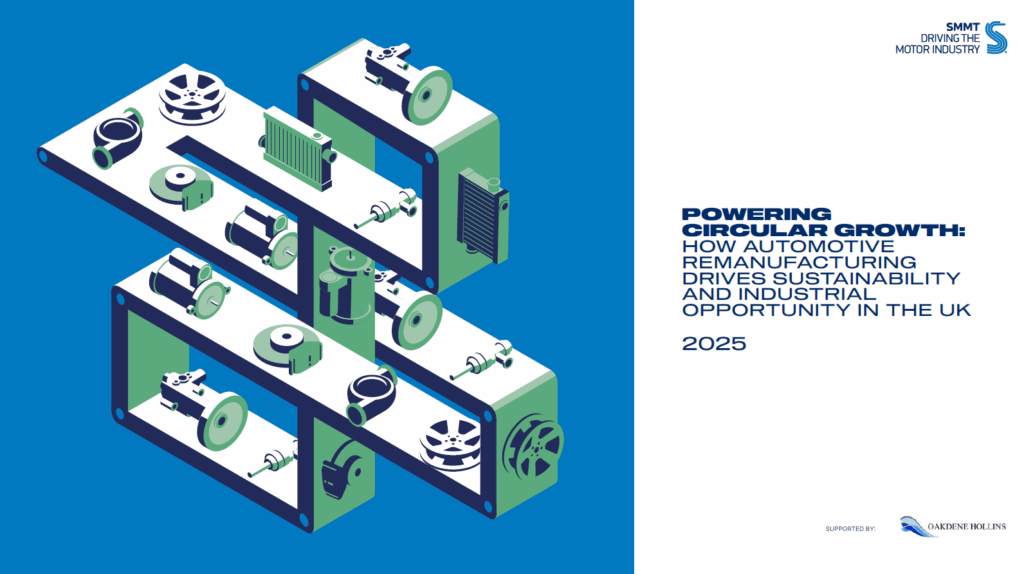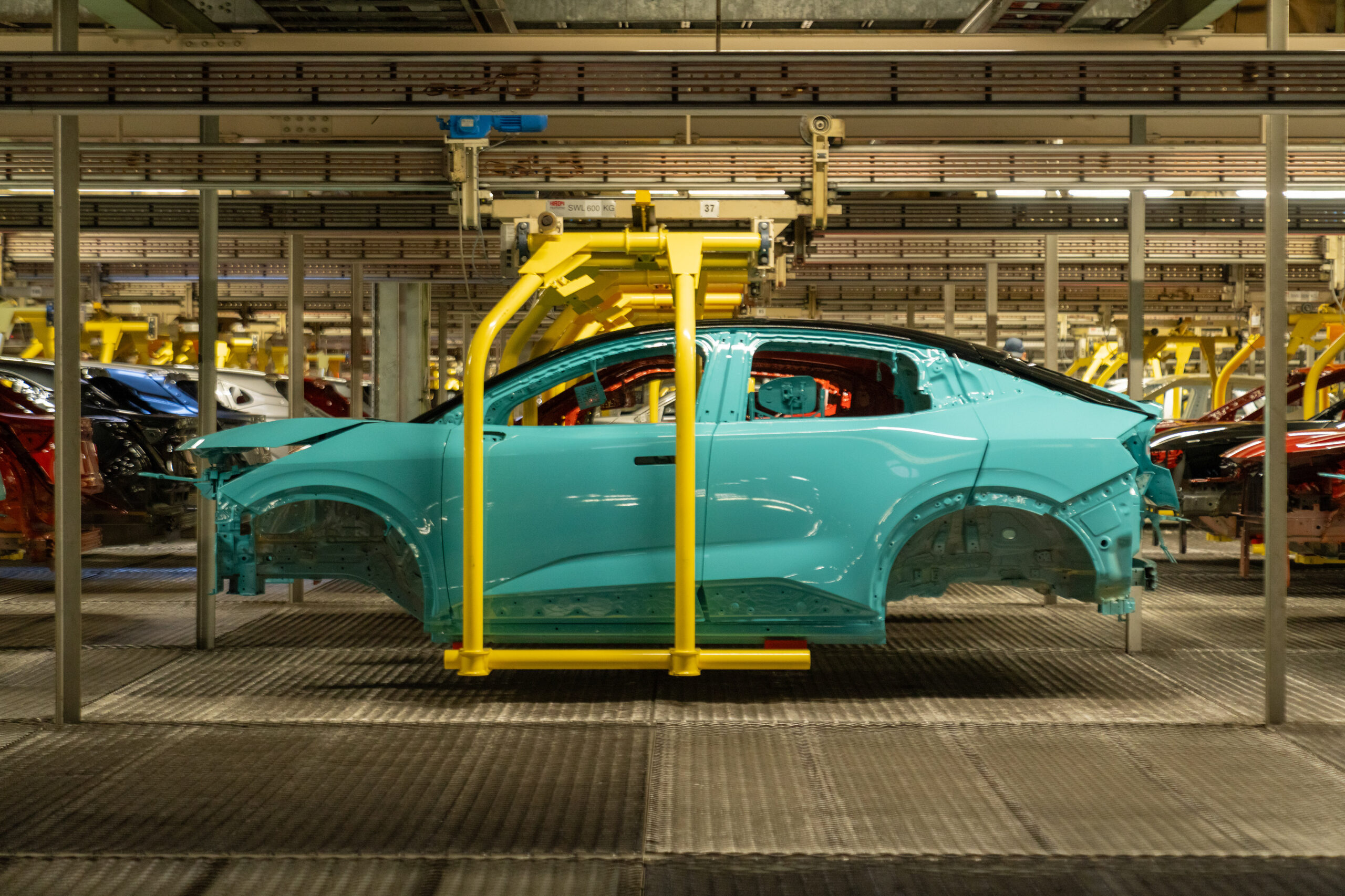
- UK’s automotive remanufacturing sector – which returns used cutting-edge parts to same-as-new or better condition – can drive green growth and drastically cut dependence on new, rare raw materials.
- Growing opportunity for expanding remanufacturing of components such as batteries, brakes and tyres, with record numbers of vehicles on UK roads.
- Placing automotive remanufacturing at the heart of the UK’s circular economy strategy will deliver economic and sustainability dividends.

Britain’s automotive remanufacturing sector can drive economic growth and greater resource independence, by returning cutting-edge and costly vehicle parts to same-as-new or better condition – while saving as much as 88% in raw materials compared with a new product, according to a new report by the Society of Motor Manufacturers and Traders (SMMT).1
Auto remanufacturing is now worth £500 million to the UK economy2 but the sector could claim an even bigger prize with a larger portion of a rapidly growing global market – one that is expected to expand by more than half to reach £31 billion in the next five years.3 Such an opportunity, if seized by the UK, would benefit a wide range of remanufacturers in Britain – covering everything from brakes and batteries to tyres and transmissions – driving further job creation and sustainability gains.
Demand for remanufactured parts, and the available supply of the cores needed for their production, is set to be strong with a record 41.9 million vehicles on UK roads last year – and more than two in five of these more than a decade old.4 Furthermore, with around 1.6 million EVs on the road, Britain has the second largest fleet in Europe. This places the country as a potential battery remanufacturing leader, reducing maintenance costs and, in the longer-term, helping to reduce dependence on imports of scarce raw materials needed for domestic vehicle and component production.
As SMMT’s new report Powering Circular Growth: How automotive remanufacturing drives sustainability and industrial opportunity in the UKsets out, however, a supportive policy framework is needed. Key steps would include revising end-of-life vehicle regulations to incorporate remanufacturing, instead of presuming all components will be scrapped; revising trade agreements to facilitate cross-border movements of cores for remanufacturing; and updating End of Waste regulations to treat cores as raw materials – instead of waste with no further use.
Such a framework would provide a clear, standardised approach for producing, distributing and using remanufactured products while championing the sector’s potential to deliver UK growth – particularly specialist and independent remanufacturers. It would also promote the industry’s contribution to UK trade, and encourage new industry investment in facilities, jobs and training.
Backing remanufacturing will be a boon for the UK – it drives job creation, fuels economic growth, and slashes carbon and waste. To realise its full potential, remanufacturing, and the independent remanufacturing sector, must be central to the UK’s circular economy strategy. With the right regulatory support, this sector can thrive.
The UK already boasts one of the world’s most diverse automotive manufacturing industries, and invigorating our remanufacturing capability will strengthen our sustainability credentials and sharpen our global competitive edge.
Notes to editors
- Powering Circular Growth: How automotive remanufacturing drives sustainability and industrial opportunity in the UK.
- Analysis in Powering Circular Growth: How automotive remanufacturing drives sustainability and industrial opportunity in the UK.
- Frost and Sullivan: Remanufacturing to Play a Pivotal Role as Automotive Aftermarket Embraces Circular Economy Principles, September 2024.
- SMMT Motorparc Vehicles in Use, 2024.


